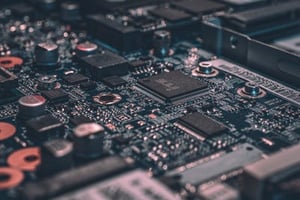RESOURCES
Designing for EMC: The Cost & Proven Safety Standards
EMC Design Practices to Reduce Cost and Improve Safety
It is extremely difficult to design for Electromagnetic Compatibility (EMC), as many dynamic variables must interact to provide a "clean," upfront design. There are, however, a number of good EMC design practices that can dramatically reduce the level of the hassle associated with EMC compliance. A key consideration for cost-effective EMC compliance is for manufacturers to adopt an approach similar to safety compliance, and allow for EMC consideration during product design and development. It is often expensive to leave EMC as the last task to be performed before a product is introduced to the market.

While safety standards delineate a clear set of rules that provide design criteria to assure product safety conformance, EMC standards do not provide guidelines for compliance. Rather, they are a set of rules for EMC testing.
Click here to watch our training "EMC Compliance Friendly Design Practices"!
The EMC Directive 89/336/EEC, adopted in 1989, amended in 1995, and mandated from January 1, 1996, is one of the most complex of the European Union (EU) new-approach directives. The directive applies to every apparatus liable to cause or be affected by electromagnetic disturbances. It is also one of the most difficult directives to comply with and it affects all sectors of industry which supply electrical or electronic apparatus to the EU.
The Costs of EMC Development
The EMC development cycle is somewhat iterative in that solutions for conducted emissions usually influence the radiated emissions and frequencies. Since EMI compliance is not exactly a product feature and has little perceived value, it is not always established initially as an essential design criterion.
Designing for EMI
There are a number of techniques available to design engineers to reduce the potential for high levels of EMI and PC boards. The following list provides examples of practices that should be used when designing PC circuit boards:
- Make use of multi-layer PC boards (wherever possible) with large ground planes.
- Use decoupling capacitors (disc ceramic) with short lead lengths from the IC's supply to the ground, keeping the capacitor close to the IC. This provides a low-impendence path for high-frequency signals.
- Keep trace lengths as short as possible, this limits the trace impendence and the antenna effect for common mode signals.
- Carefully select components to minimize the potential of EMI.
Identifying EMI Challenges
Manufacturers should not expect that taking off-the-shelf components and pairing them with custom parts in order to provide an EMI solution is enough to ensure compliance for their product throughout the lifetime of its production. There needs to be an understanding that any change in a component, regardless of how minor, can affect the EMI performance of their product in the future.
With the end-user being responsible for the compliance of their products, it is highly recommended to have products tested regularly to account for any possible changes and to discover any potential problems as early as possible.

